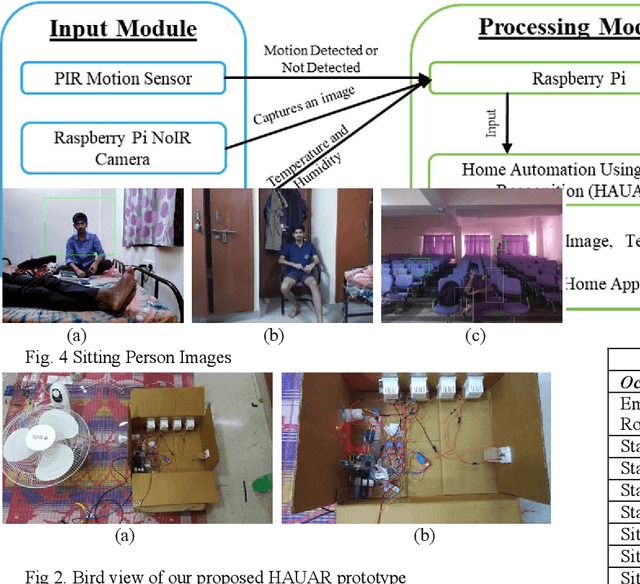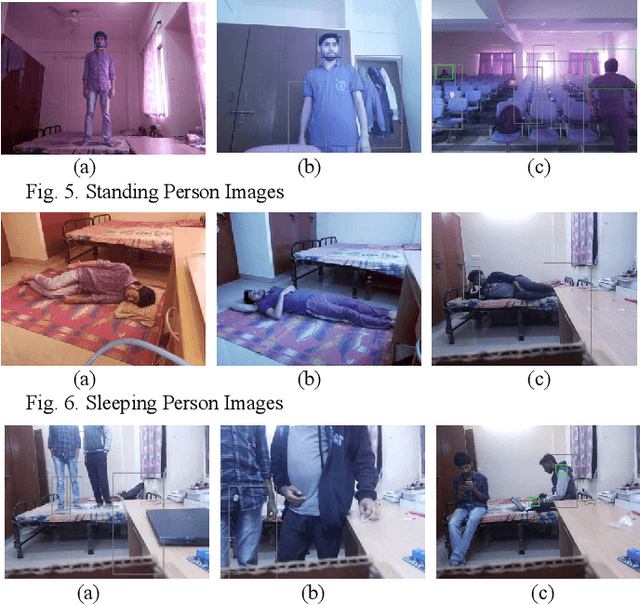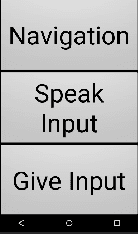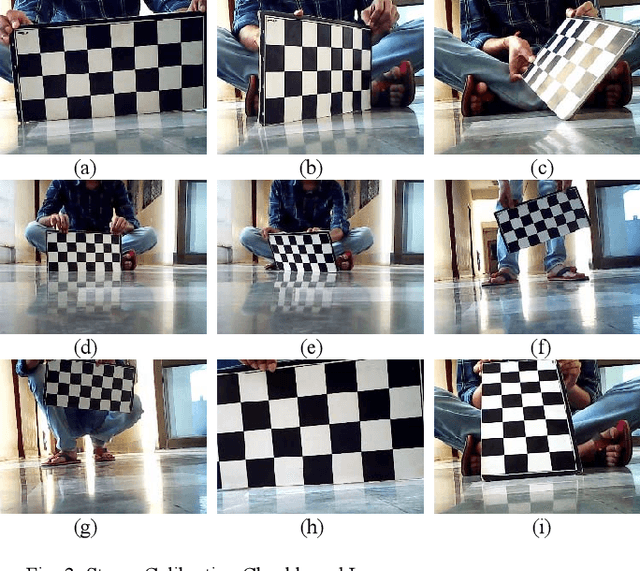Pankaj Kumar Sahu
HAUAR: Home Automation Using Action Recognition
Apr 26, 2019



Abstract:Today, many of the home automation systems deployed are mostly controlled by humans. This control by humans restricts the automation of home appliances to an extent. Also, most of the deployed home automation systems use the Internet of Things technology to control the appliances. In this paper, we propose a system developed using action recognition to fully automate the home appliances. We recognize the three actions of a person (sitting, standing and lying) along with the recognition of an empty room. The accuracy of the system was 90% in the real-life test experiments. With this system, we remove the human intervention in home automation systems for controlling the home appliances and at the same time we ensure the data privacy and reduce the energy consumption by efficiently and optimally using home appliances.
Drishtikon: An advanced navigational aid system for visually impaired people
Apr 23, 2019



Abstract:Today, many of the aid systems deployed for visually impaired people are mostly made for a single purpose. Be it navigation, object detection, or distance perceiving. Also, most of the deployed aid systems use indoor navigation which requires a pre-knowledge of the environment. These aid systems often fail to help visually impaired people in the unfamiliar scenario. In this paper, we propose an aid system developed using object detection and depth perceivement to navigate a person without dashing into an object. The prototype developed detects 90 different types of objects and compute their distances from the user. We also, implemented a navigation feature to get input from the user about the target destination and hence, navigate the impaired person to his/her destination using Google Directions API. With this system, we built a multi-feature, high accuracy navigational aid system which can be deployed in the wild and help the visually impaired people in their daily life by navigating them effortlessly to their desired destination.
 Add to Chrome
Add to Chrome Add to Firefox
Add to Firefox Add to Edge
Add to Edge